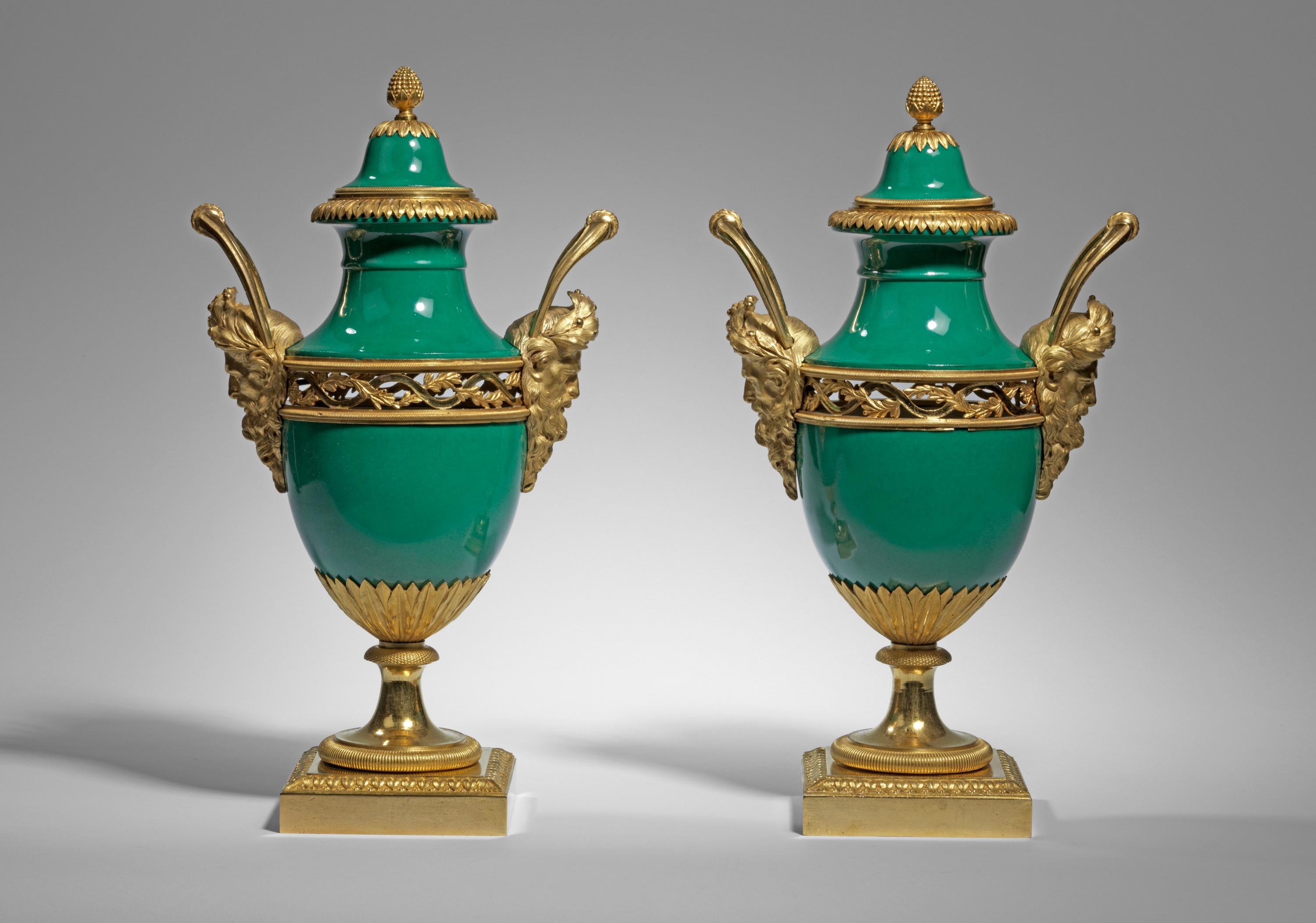
Circa 1775
A Pair of Louis XVI Ormolu-Mounted Green Locre Porcelain Pot-Pourri Vases, Attributed to Pierre Gouthière. Circa 1775

Provenance
The Fine Arts Museum of San Francisco.
Locre Porcelain Factory
Founded 1773 by Jean-Baptist Locre, Porcelaine de Paris was one of the first manufacturers to use the Chinese secret of hard paste porcelain. It immediately aimed for the luxury trade, selling to the Royal Courts of Europe.
Pierre Gouthiere
The son of a saddlemaker, Pierre Gouthière was born in 1732 and rose to become the most famous Parisian bronze chaser and gilder of the late 1700s, receiving commissions from some of the leading connoisseurs of his day. He became maître in metalwork in 1758. Like many successful apprentices, he married the widow of his first employer and took over his establishment. Success came quickly, and in November 1767 he received the title of Doreur du Roi, (Gilder to the King), from Louis XV. Gouthière also supplied works to the Comte d'Artois, the Marquis de Marigny, and the marchand-mercier, Dominique Daguerre, among others. He died in 1813.
Gouthière was a master of chasing and invented a new type of gilding that left a matte finish. He combined polished with matte finishes to create varied effects on the surfaces of his bronzes. He made many types of objects, including furniture mounts, ornaments for mantelpieces and coaches, and mounts for porcelain or marble vases. Gouthière was successful and enjoyed an extravagant lifestyle. After 1775, however, two of his major patrons died and his financial speculations were unlucky. The 750,000 livres owed to him by Madame du Barry, Louis XV's mistress, for nearly twenty years' work finally forced him into bankruptcy in 1787. He died in poverty, still trying to make her heirs repay him. The case was finally resolved twenty years later, when his son received a small fraction of the original debt as reimbursement.
Measurements
| DIMENSIONS | CM | INCHES |
|---|---|---|
| Width: | 22 | 9 |
| Depth: | 13 | 5 |
| Height: | 38 | 15 |